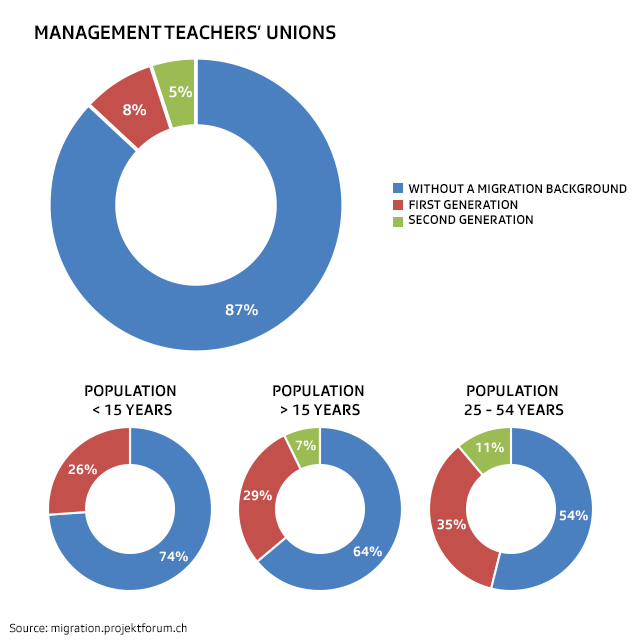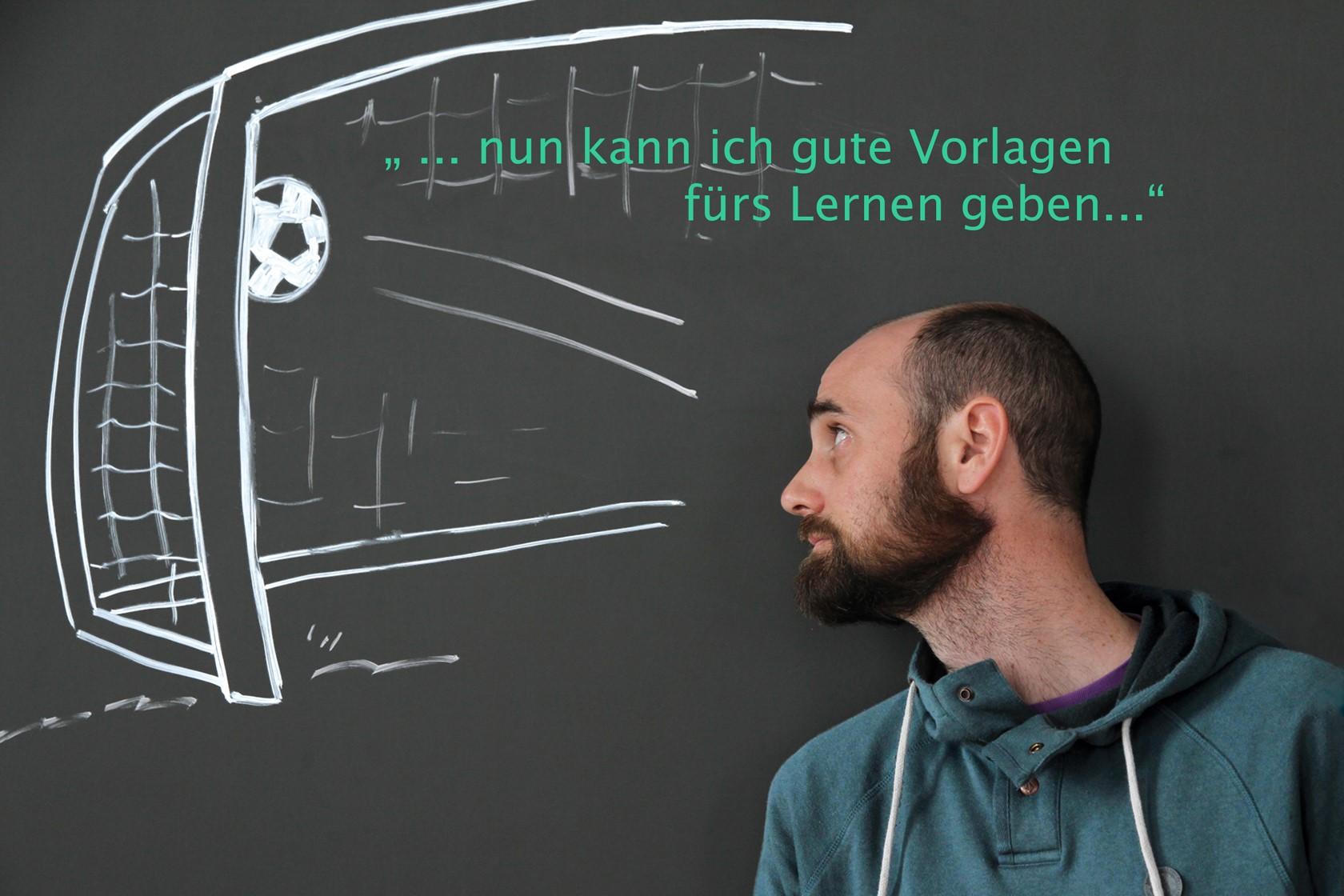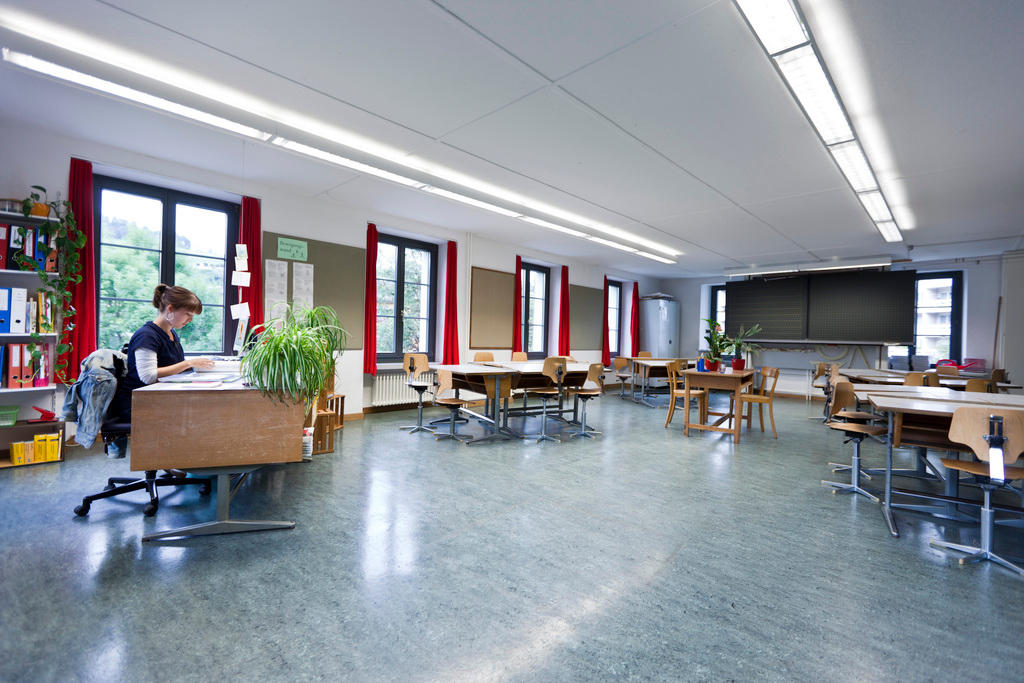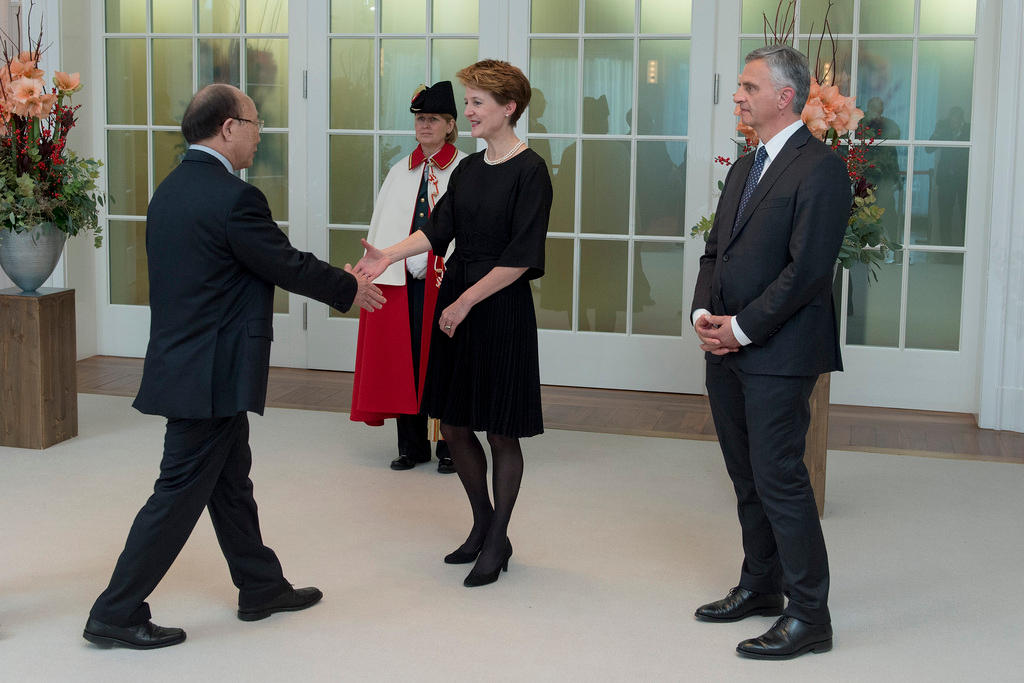Wanted: teachers of all origins

Are teachers in Swiss schools too Swiss? One university of teacher training thinks so. It plans to launch an innovative campaign to find trainee teachers from immigrant backgrounds in sports and cultural clubs and youth organisations.
Currently only 10-15% of students at the University of Teacher Education PHBernExternal link are from an immigrant background. This is defined as foreigners and naturalised persons, as well as Swiss-born people whose two parents were born abroad. Suzana Milenkovic, originally from Serbia, is one of them.
She says that language issues are one reason for the low numbers. “People who don’t speak German at home perhaps don’t feel secure enough in this language or perhaps think that their knowledge is not good enough for teacher training,” Milenkovic told swissinfo,ch via email.
Many people with migration backgrounds also want to finish their education quickly to help their family or to start their own families. This means most opt for an apprenticeship over studies, she said.
Milenkovic says it is important to have more teachers with diverse origins to reflect the growing number of children with similar family histories. It is easier, for example, for a multilingual person to help pupils with language issues. “This was my own experience, as I only learned German from the age of 12 and it’s easy for me to understand why my pupils make certain mistakes in German,” she explained.
Daniel SteinerExternal link, head of the Institute for Pre-Primary and Primary Education at PHBern, added that often children with a migration background or from educationally disadvantaged homes – these can overlap – are assumed to be lower performing than their peers, despite similar intelligence levels. This can lead to them not progressing into the academic stream that that can lead to higher education.
Finding candidates
Finding trainee teachers who fit the profile is hard, he admits. This is why the university is planning a project – the details of which will be finalised this summer – that will approach potential students directly, especially those who have not been to an academic secondary school (gymnasium).
“It’s a difficult problem. You can’t just do an image campaign with posters and new brochures, you have to go into to the clubs,” Steiner told swissinfo.ch.
Another advantage: the project might also encourage more men to apply, of which there are also too few in primary schools.
Steiner says that teachers with immigrant backgrounds can play a special role in schools: “they might gain better access to parents [from different countries] and they could take on a role model function in schools, be a positive example of successful integration and an ambassador of cultural diversity”.
However, he pointed out that even in cases such as the two Muslim pupils refusing to shake hands with female teachers in a school near Basel, migration background teachers would not have necessarily reacted differently. Handshaking is part of Swiss culture and daily life. Also, everyone has to keep to the school and education regulations.
The numbers
The Swiss Teachers’ UnionExternal link is also concerned about the issue of having a diversity of teachers, calling for universities of teacher education to increase migration background student numbersExternal link at the end of last year.
It said that while Swiss universities had 31% of students in this category, the number fell to 16% among teacher training institutions.
So how many current teachers fit? No comprehensive statistics exist, but an indication can be found in the figures for teachers with foreign passports: 5.5% in 2015 (in obligatory school), according to the Federal Statistical Office.
The Teachers’ Union had its own stab at statistics when it compared migration background among sections of the population with that of management in teachers’ unions.

Carola MantelExternal link, from the University of Teacher Education Zug, which is running its own research project into teaching staff diversityExternal link, welcomes the intention to have a more diverse teaching staff. This helps normalise diversity in schools, she said.
Challenges
But there are challenges, Mantel said in email comments to swissinfo.ch. For example, in Germany, where calls on the issue have been stronger than in Switzerland, immigrant background teachers assigned ambassadorial roles on migration issues can feel “pushed into a ‘migration corner’, while what they really want and have been fighting for is to be recognised foremost professionally and not to be reduced to a ‘migration background’”.
This leads to these staff members being treated differently, which is not the aim when trying to make diversity more normal, she pointed out.
These are dangers of which the University of Teacher Education PHBern’s Steiner is also aware.
There is also the risk that teaching diversity campaigns can distract from the real problem that “teachers with a migration background experience reduced recognition, especially from their colleagues and their students’ parents, and only use their resources sparingly”, Mantel added.
She gave the example of a teacher in her research who avoided speaking Serbian to parents from Serbia for fear of jeopardizing his standing among his peers and other parents.
It would be more effective to work on these ‘recognition settings’ so that immigrant background teachers gain wider acceptance, she said. A good approach is through school development programmes on social diversity. These are normally aimed at pupils, but could also be applied to HR and the hiring of staff, said Mantel.
Steiner agrees that it is important to train all teachers in intercultural education, not just immigrant background ones. Everyone should be responsible, he says.
As for Milenkovic, apart from wanting to help others, her other main motivation for becoming a teacher stems from her roots. She wants to be a role model to her pupils “and show them that you can also have a good career when you have an immigrant background”.
Immigrant background explained
In 2015, 36% of the permanent resident population were of a migration background. A third of this population has Swiss nationality.
The “population with a migration background” group includes foreign nationals and naturalised persons, except for those born in Switzerland and whose two parents were born in Switzerland, as well as Swiss-born persons whose two parents were born abroad.
Four-fifths of people with a migration background are first generation. The remaining fifth was born in Switzerland. (These are the second generation foreign nationals, Swiss-born and naturalised people.)
Source: Federal Statistical Office

In compliance with the JTI standards
More: SWI swissinfo.ch certified by the Journalism Trust Initiative













You can find an overview of ongoing debates with our journalists here . Please join us!
If you want to start a conversation about a topic raised in this article or want to report factual errors, email us at english@swissinfo.ch.